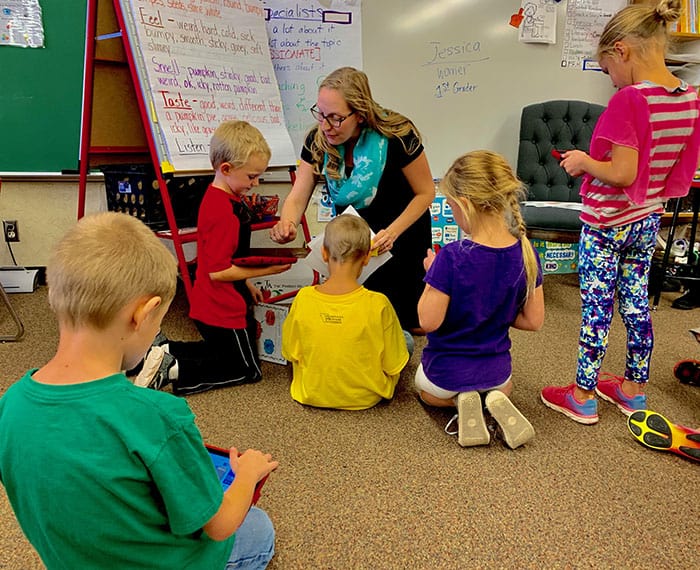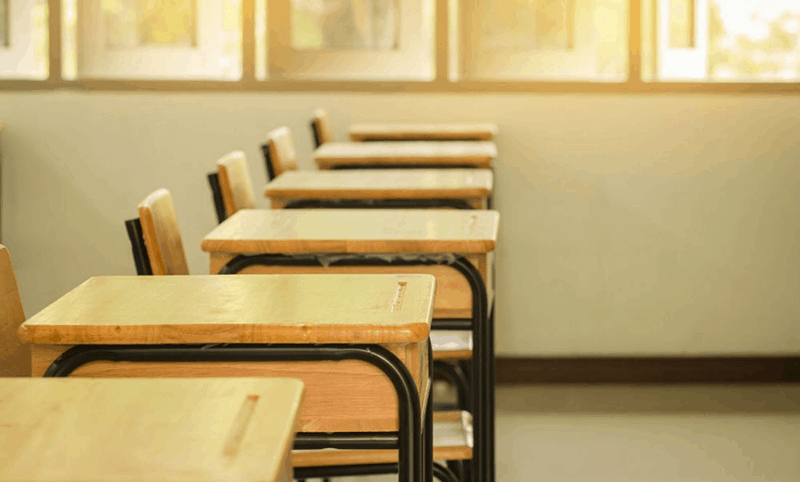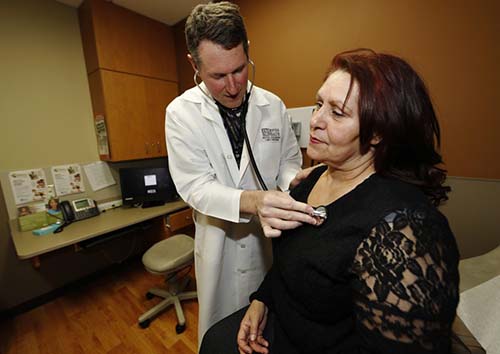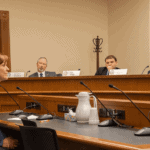Senate committee advances bill to cut $16.5 million from Wyoming school funding
Both chambers of the Wyoming Legislature agree that the state’s public education budget needs a $39 million “external cost adjustment” to keep up with inflation during the next biennium.
According to the Wyoming Department of Education, failing to provide this additional money would put the state at odds with Wyoming’s constitutional mandate to provide an equitable education to all students.
But in the Wyoming Senate—where lawmakers have worked for years to cut school funding—one hand giveth, and the other hand taketh away.
On Monday the Senate Education Committee advanced a bill that would cut roughly $16.5 million from the statewide education budget over the next two years, and more after that. It would do so by targeting funding for transportation and by eliminating a source of districts’ discretionary funds.
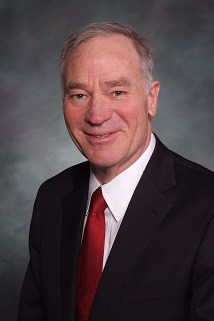
Sen. Dave Kinskey
Sen. Dave Kinskey (R-Sheridan) argued that, in fact, Senate File 118, sponsored by the Senate Appropriations Committee, is not actually a “cut.” Rather, it is merely a reduction to the rate of growth built into the state’s school funding model.
In layman’s terms, however, a reduction in funding is known as a “cut.” And what it means for Wyoming schools and students is fewer resources for education.
A note on the “block grant”
Wyoming education funding is complex. Essentially, the state analyzes a whole slew of different factors and, with the help of consultants, creates a “funding model” that determines how much money school districts should receive.
The state then allocates each district a “block grant” that it can spend as it sees fit. Since different districts have different specific costs, the block grant approach allows school districts flexibility to spend money where its needed.
Transportation is funded slightly differently, outside the block grant, which makes it attractive to lawmakers looking for places to cut. However, if the Legislature adds a $39 million increase for teacher salaries but then turns around and cuts $16.5 million from health insurance and transportation, it still simply means less money for school districts.
On Monday, Sen. Chris Rothfuss (D-Laramie) alluded to this complexity when he called out SF-118’s cuts as “blunt approaches to complicated problems that don’t actually lead to solutions.”
Buses break down
SF-118 would cut Wyoming school funding from two angles.
“It doesn’t necessarily save money in the long run to be cheap today.”
The first would cap funding for transportation at the previous year’s level. The other would eliminate funding that, on paper, supports employee healthcare, but in reality provides districts critical discretionary funds.
Lawmakers for several years have targeted school transportation funding. Many argue that school buses should be required to travel more miles than they currently do before they can be replaced.
But if a school bus breaks down, it breaks down. A district will have to pay for it whether the state allocated funds or not. It simply means the district will have to pull funds from elsewhere in its budget.
“It doesn’t necessarily save money in the long run to be cheap today,” Rothfuss said.
Wyoming’s school funding model includes regular increases for things like transportation, because the cost of providing transportation regularly increases—vehicles cost more today than they did in 2000, for instance.
People like Sen. Kinskey who argue that SF-118 isn’t really a cut do so because, technically, the total amount of money for transportation would not decrease. It would just stay the same as costs increase.
For Wyoming schools, that’s a net loss.
Discretionary funds help districts keep teachers
The second provision goes after what seems like an easy target: health insurance for “ghost teachers.” The term refers to teachers who are included in the state’s funding model but exist only on paper, for budgetary purposes.
These teachers don’t exist—hence, the “ghost” nickname. They’re merely line items in the budget that everyone understands are meant to provide schools with discretionary funds. They’re included so everything lines up on the balance sheets.

Sen. Chris Rothfuss
It’s perhaps an imperfect mechanism, but Rothfuss said Monday that extra “wiggle room” in the state’s formula allows districts to pay higher salaries for teachers who are in the classrooms. This is particularly important for rural districts that have trouble recruiting educators, and at a time when the nation faces a teacher shortage.
The Senate Education Committee has looked carefully at both transportation and “ghost teachers” as potential places to find efficiencies in recent years. It has rejected both approaches.
Rothfuss criticized SF-118 as “poorly thought out” and said the Legislature should rely on the process of recalibration if it wants to make adjustments to the funding model.
A regular round of “recalibration” is scheduled to begin during the 2020 interim session.
Let “recalibration” work
The last time the Legislature went through the “recalibration” process, it did so at the behest of lawmakers looking for “fat” to trim from the budget.
The education consultants they hired didn’t find any. Instead, they recommended that Wyoming spend $71 million more that it currently does.
But the Legislature refuses to raise new revenues to replace what the state has lost from the decline of the coal industry, so lawmakers are left with no choice but to spend down our savings accounts and make ill-informed attempts at further cuts.
SF-118 passed committee Monday on a 3 – 2 vote. Sen. Affie Ellis (R-Cheyenne) remarked before casting her “aye” vote that she felt the bill merited further discussion, but she wouldn’t necessarily support it on the Senate floor.
Ellis has historically promoted severe cuts to Wyoming school funding.
Sen. Bill Landen (R-Casper) hedged in the other direction. He voted against the bill, he said, because he didn’t disagree with any of Rothfuss’ criticisms.
But, Landen added, “We’ve all got to realize that somehow we’ve got to get our arms around this structural [budget] deficit that’s real. We’ve got to figure out ways to stop the growth of government, and this bill is one of them.”

